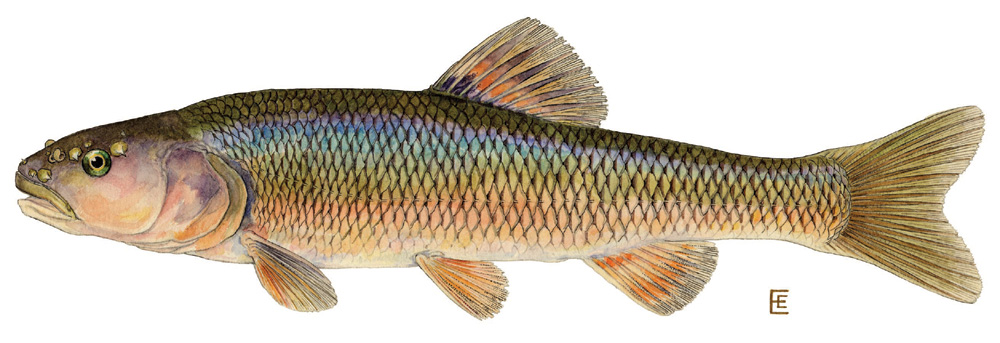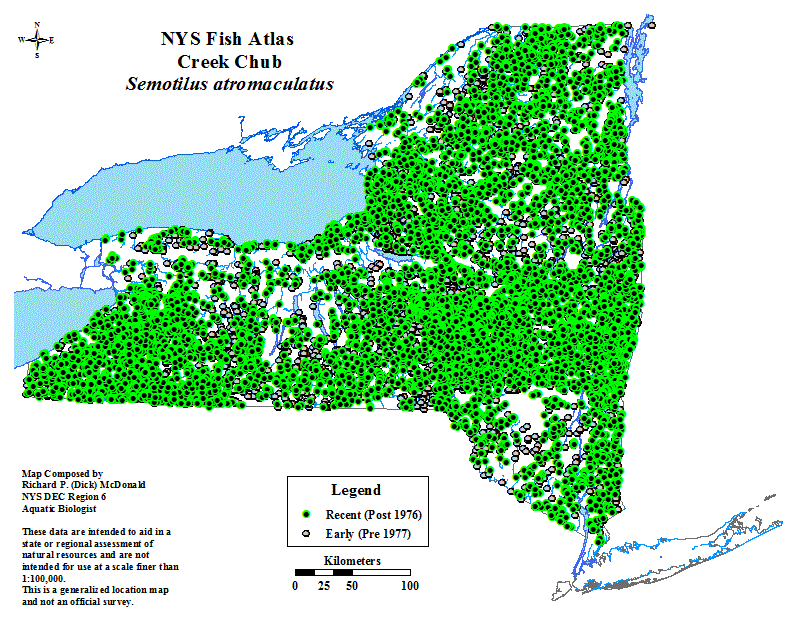
Creek Chub (Semolitus atromaculatus)
The creek chub is a medium-sized minnow that can reach lengths of 8-10 inches. Throughout most of the year creek chubs appear black or bluish above and silvery below, though during the spring spawning season male creek chubs take on a bright, rosy color and develop at least four large tubercles on each side of their heads. These breeding tubercles are the basis for one of the common names for the creek chub, "horned dace." Creek chubs also have a single, small barbel in the corner of each jaw that is sometimes hidden between the maxillary and premaxillary bones. Adult fish are most easily identified by a prominent dark spot at the base of the dorsal fin. The male creek chub builds and carefully guards a mound of small stones in which the eggs are deposited.
In New York, the creek chub is found in creeks and shoreline areas of lakes within all drainages, excluding Long Island. This common minnow is frequently preyed upon by larger predatory sport fish, and dramatic declines in creek chub abundance have been observed in response to introductions of non-native smallmouth bass in Adirondack lakes. However, creek chubs living within lakes are moderately tolerant of predation relative to some other native minnows (e.g. finescale dace, lake chubs), which might be due to their ability to find refuge in tributary streams or along shorelines with abundant wood or rock cover. Creek chubs are one of the most common minnows found in undisturbed lake fish communities where native brook trout are the dominant predator.
Distribution of the creek chub in NY state.
A 217 KB image of the creek chub is also available for download.
Back to the Minnow Family | Back to Fish Images
